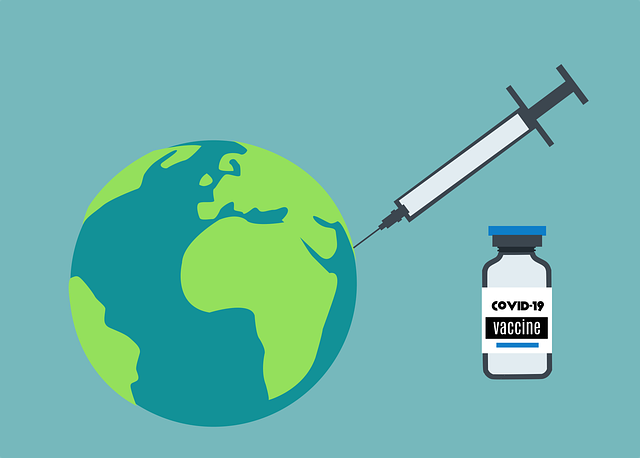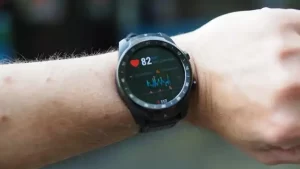Some Pfizer COVID-19 vaccines were thrown away
- Statins Lower Blood Lipids: How Long is a Course?
- Warning: Smartwatch Blood Sugar Measurement Deemed Dangerous
- Mifepristone: A Safe and Effective Abortion Option Amidst Controversy
- Asbestos Detected in Buildings Damaged in Ukraine: Analyzed by Japanese Company
- New Ocrevus Subcutaneous Injection Therapy Shows Promising Results in Multiple Sclerosis Treatmen
- Dutch Man Infected with COVID-19 for 613 Days Dies: Accumulating Over 50 Virus Mutations
Some Pfizer COVID-19 vaccines were thrown away . Pfizer vaccine accident occurred after the start of vaccination in the United States, some vaccines were thrown away for nothing.
The US Food and Drug Administration (FDA) approved the emergency use authorization of the COVID-19 vaccine (hereinafter referred to as Pfizer vaccine) jointly developed by Pfizer/BioNTech, the first batch of 2.9 million doses The vaccine began to be promoted in the United States on the 14th, but a new situation emerged in the vaccination process…
According to US media reports, the bottled dose of Pfizer vaccine was originally 5 doses, but pharmacists found that they could get 6 or even 7 doses of vaccine from some vaccine vials. This excites many Americans, because many hospital staff believe that the emergence of this situation will make it possible to provide this currently urgently needed but scarce vaccine to more people, and it has also triggered questions about whether the extra doses Disputes that can be used or should be thrown away. Some hospitals have thrown away many “excess doses” of vaccines while waiting for guidance from the state health department.
Pfizer vaccine
Erin Fox, senior pharmacy director of the University of Utah Drug Information and Support Services, said that on the 16th, shortly after the pharmacist began to dilute the vaccine with saline and inhale it into the syringe, her staff received information from the pharmacists A call for excess dose of vaccine appears in the vaccine bottle. The pharmacists initially thought that they might have done something wrong, and sent Fox a photo of the bottle with the excess dose after sucking out 5 doses of vaccine with a syringe. Fox employees contacted Pfizer and the Utah Department of Health, and Pfizer and the Utah Department of Health responded that they should not use excess doses of vaccines because they did not comply with Pfizer’s instructions. These excess doses of vaccine were also thrown away.
On the 16th local time, pharmacists waited for an official response from the FDA. In a statement, the FDA said that, given the current public health emergency, it is acceptable to use all the excess full doses in each vaccine vial. However, since the vaccine bottle itself is not antiseptic, it must be noted that the excess dose in multiple vaccine bottles cannot be collected into a complete dose for use. The FDA also stated that it is negotiating with Pfizer to determine the best solution.
Pfizer said in a statement that the dose of vaccine in each vaccine vial is uniform, and the reason for the excess dose may be the type of syringe and needle and the amount of diluent used. Pfizer also stated that it is negotiating with the FDA, but it “cannot give advice on the use of excess doses of vaccine in each vaccine vial,” and recommends that the person conducting the vaccination work to negotiate this matter with relevant local agencies.
Vaccine vials with excess dose
New York’s North Shore-Long Island Jewish Medical System (Northwell Health) Chief Quality Officer Mark Jarrett (Mark Jarrett) said on the 17th that clinicians who vaccinated healthcare workers with Pfizer this week noticed that some vaccine vials contained enough The sixth dose of vaccine was given and the New York State Department of Health has been requested to provide guidance on whether the excess dose of vaccine can be used. Jarrett said: “Some people use the sixth dose because they don’t know about it.” But the North Shore-Long Island Jewish Medical System only dispenses five doses of vaccine from each vaccine bottle. Throw away about 15 to 20 doses on the 15th.
Jarrett said he has not seen the FDA’s guidance. He said: “We need to see its files somewhere, which will make us feel better.”
According to a spokesperson for the New York State Department of Health, New York State health officials contacted the FDA on the morning of the 17th to seek guidance after learning of the problem. In a conference call with nearly 200 health care providers on the 16th, State Health Commissioner Howard A. Zucker discussed this issue and said that excess doses of vaccines can be used. Health care consultant Michael J. Consuelos said that during the H1N1 influenza pandemic in 2009, a hospital pharmacist encountered a similar situation in the Lehigh Valley medical system in Pennsylvania, where he was responsible for monitoring The pandemic response. At that time, flu vaccines were also scarce, and officials finally decided to use excess doses of vaccine. He said: “What we have to do is to provide people with as many doses as possible safely and effectively.” He said that if hospital professionals can do this safely, then “we should seize these opportunities.” In addition, he also revealed that he is a volunteer participating in Pfizer vaccine clinical trials.
Dr. Dopp, senior director of clinical guidance and quality improvement of the American Association of Health System Pharmacists, said that hospitals trying to use excess doses of vaccine must ensure that people who have already received the first dose of vaccine have enough vaccine when they receive the second dose three weeks later. Against them. She also said that through this, she learned some lessons that could not be obtained before the vaccination was carried out.
According to reports, Pfizer vaccines are currently quite scarce, and Pfizer said that it has produced enough vaccines to provide at least 25 million doses to the United States by the end of the year, because vaccinators need two injections, so it can meet the needs of 12.5 million people. , But US federal officials are very cautious about the distribution of vaccines. After the FDA approved the emergency use authorization of Pfizer vaccine, only 2.9 million doses were distributed, and they were given priority to frontline medical workers and nursing home residents and staff. Experts say that there will not be enough vaccines available to all people who want to get vaccinated until next year.
In addition, the COVID-19 vaccine developed by Moderna is expected to receive emergency use authorization from the U.S. Food and Drug Administration (FDA) this week. US Secretary of Health and Human Services Alex Azar said in a conference call on the 16th that another 2 million doses of Pfizer vaccine and 5.9 million doses of Moderna vaccine will be distributed next week.
(source:internet)
Disclaimer of medicaltrend.org




